Diving in Tolitoli
Tolitoli is a small town in central Sulawesi (Sulawesi Tengah) and is located in the extreme northwest of this Indonesian island, on the eastern edge of the Makassar Strait, which separates Sulawesi from Borneo/Kalimantan.
On the opposite side are well-known diving destinations such as Derawan, Sangkalaki and the Maratua Atoll.
Not much has been heard of diving on the Sulawesi side. One more reason that in November 2019, after a short visit to the Prince John Dive Resort, I headed north towards Tolitoli.
On the opposite side are well-known diving destinations such as Derawan, Sangkalaki and the Maratua Atoll.
Not much has been heard of diving on the Sulawesi side. One more reason that in November 2019, after a short visit to the Prince John Dive Resort, I headed north towards Tolitoli.
Video: Diving in Tolitoli
A short video about my diving experiences in Tolitoli. The conditions for diving in Tolitoli are more than basic. If you really want to see dugongs, you need a lot of time. Yes, there are still a few animals around. But they are very shy and it might be even more difficult to get these animals in front of the camera.
Since Vimeo is blocked in Indonesia, here is the link to the same video on YouTube:
https://youtu.be/f42NRxjN39s
Since Vimeo is blocked in Indonesia, here is the link to the same video on YouTube:
https://youtu.be/f42NRxjN39s
How to get to Tolitoli?
The distance from Palu to Tolitoli is about 9 hours by car. You can also fly if you are traveling with less luggage than wes did. Then you miss the scenic route along the coast and through the mountains of Sulawesi.
The road leads from Palu over the mountains to Tomini Bay on the opposite side. Then the journey continues along the coast until after about 260 km you have to turn west over the mountains towards Tolitoli.
Especially in the mountains there are always beautiful views, but in the end you will be happy when you have reached your destination after a whole day in the car.
The road, which is very bad in places, is definitely nothing for people with back problems. At least one gets a feel for the size of Sulawesi during such a trip. The island is very big indeed!
The road leads from Palu over the mountains to Tomini Bay on the opposite side. Then the journey continues along the coast until after about 260 km you have to turn west over the mountains towards Tolitoli.
Especially in the mountains there are always beautiful views, but in the end you will be happy when you have reached your destination after a whole day in the car.
The road, which is very bad in places, is definitely nothing for people with back problems. At least one gets a feel for the size of Sulawesi during such a trip. The island is very big indeed!
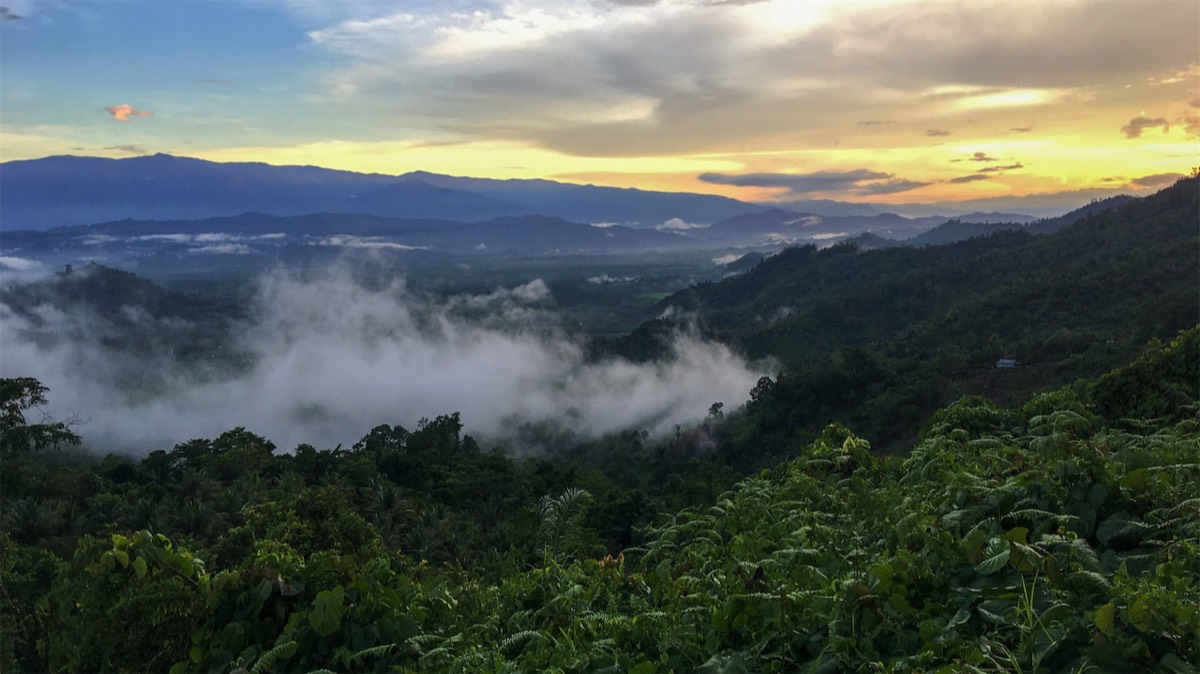
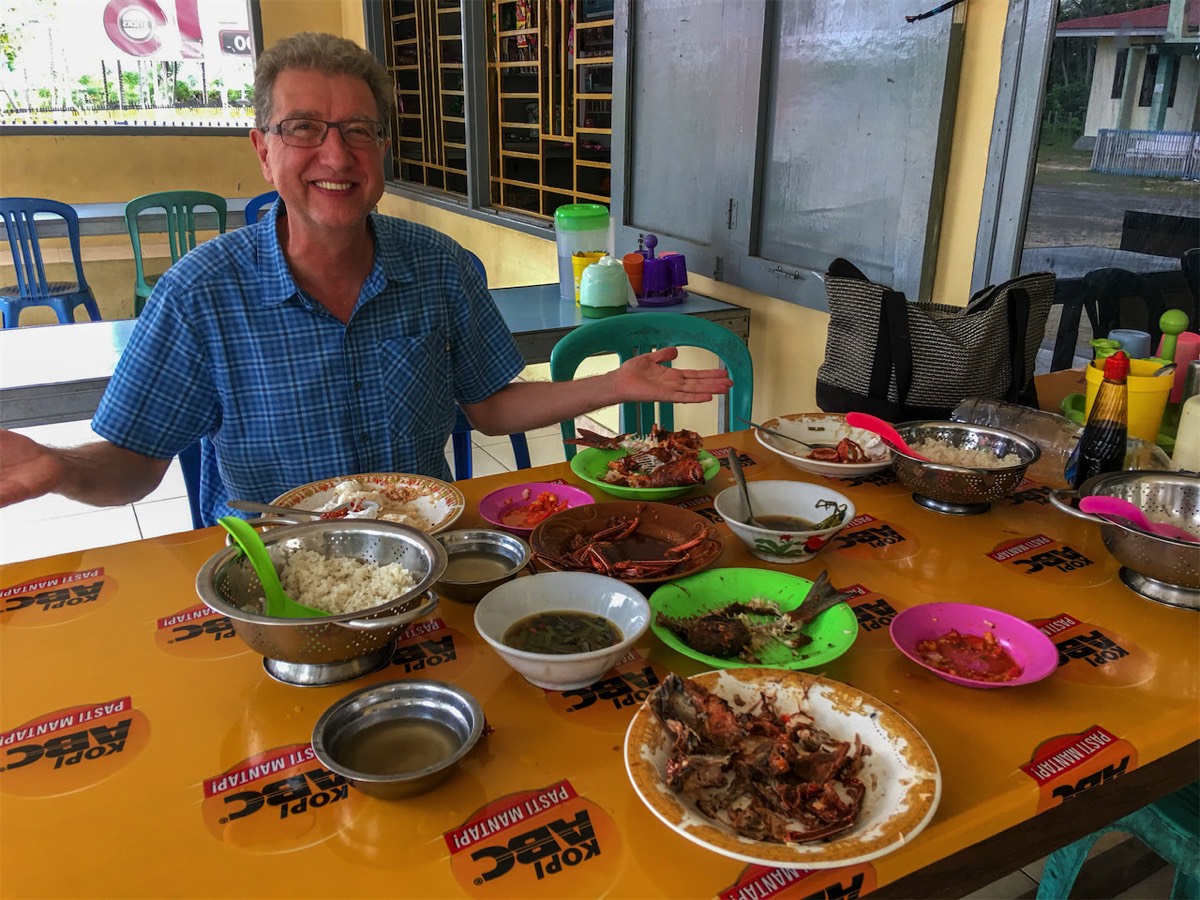
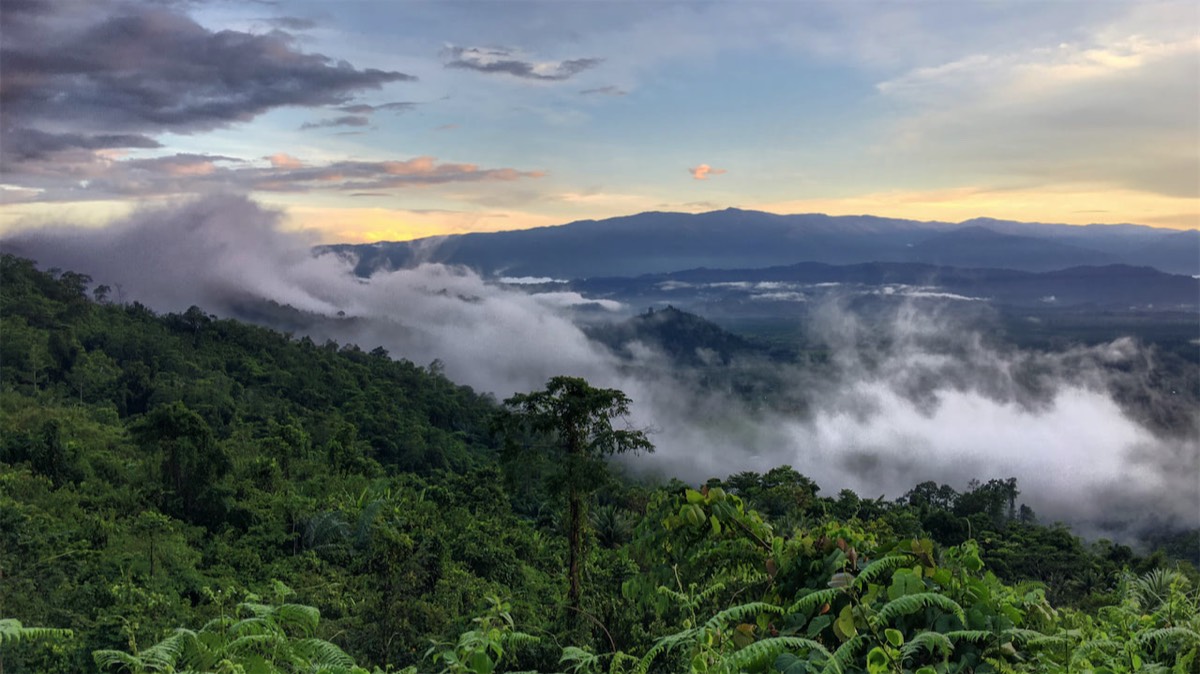

Tolitoli: Tristesse in gray and brown
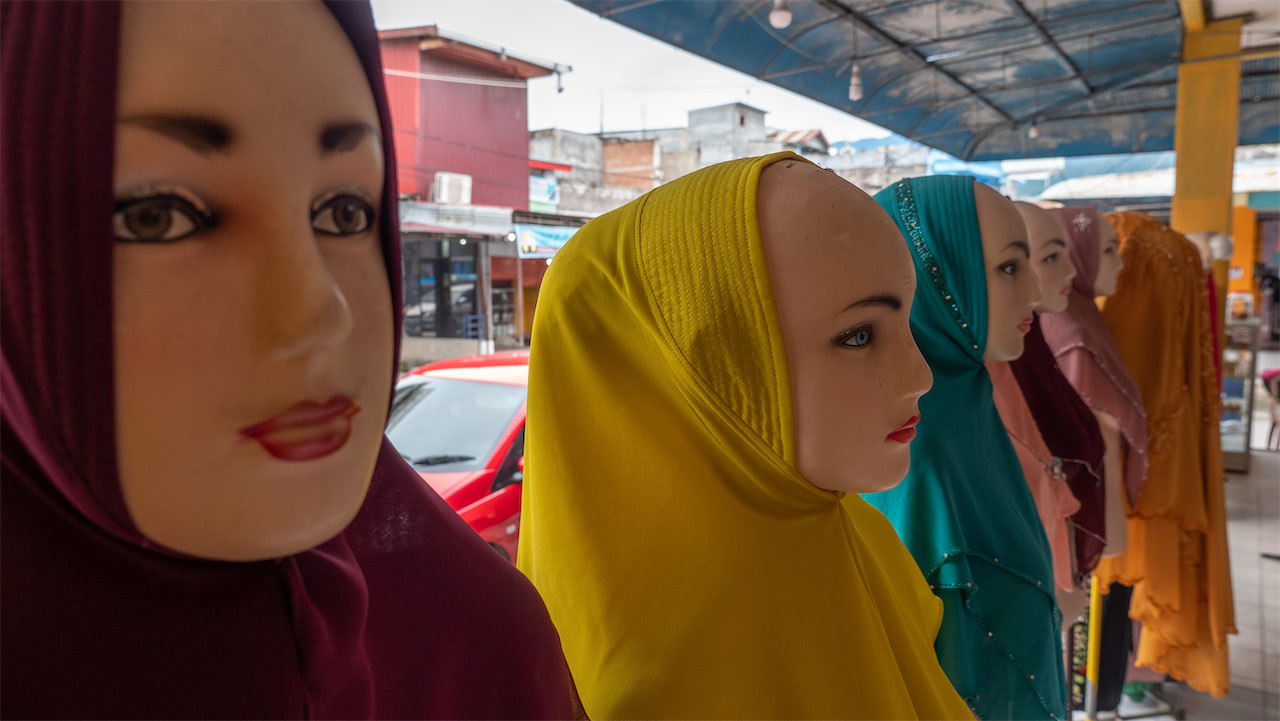
He wasn't entirely wrong about that. The shore area around the port and market is completely littered and there is little else that is beautiful or traditional and worth to see in Tolitoli.
The setting of the small town in a large bay surrounded by forested mountains is actually quite beautiful.
The original inhabitants of the area, who still speak a language related to Filipino Tagalog, have now become a minority.
The street scene is characterized by the hijab gray and brown of the immigrants, especially from South Sulawesi. In the center of the city there is a large monument showing the Tolitolis in their traditional costume. You are then surprised to find that women used to walk here around without any headdress.
Today you will not meet a woman on a shopping spree in the city without the obligatory hijab, even babies and toddlers are wrapped under the veil.
In this remote and neglected part of Sulawesi, as in many other areas in Indonesia, a Wahhabi-influenced Islam has spread over the last 20 years. In Tolitoli, Indonesia has already lost its colors!
At best, splashes of color are added by the market stalls in the harbor area, where an abundance of fruit is on sale.
The street scene is characterized by the hijab gray and brown of the immigrants, especially from South Sulawesi. In the center of the city there is a large monument showing the Tolitolis in their traditional costume. You are then surprised to find that women used to walk here around without any headdress.
Today you will not meet a woman on a shopping spree in the city without the obligatory hijab, even babies and toddlers are wrapped under the veil.
In this remote and neglected part of Sulawesi, as in many other areas in Indonesia, a Wahhabi-influenced Islam has spread over the last 20 years. In Tolitoli, Indonesia has already lost its colors!
At best, splashes of color are added by the market stalls in the harbor area, where an abundance of fruit is on sale.
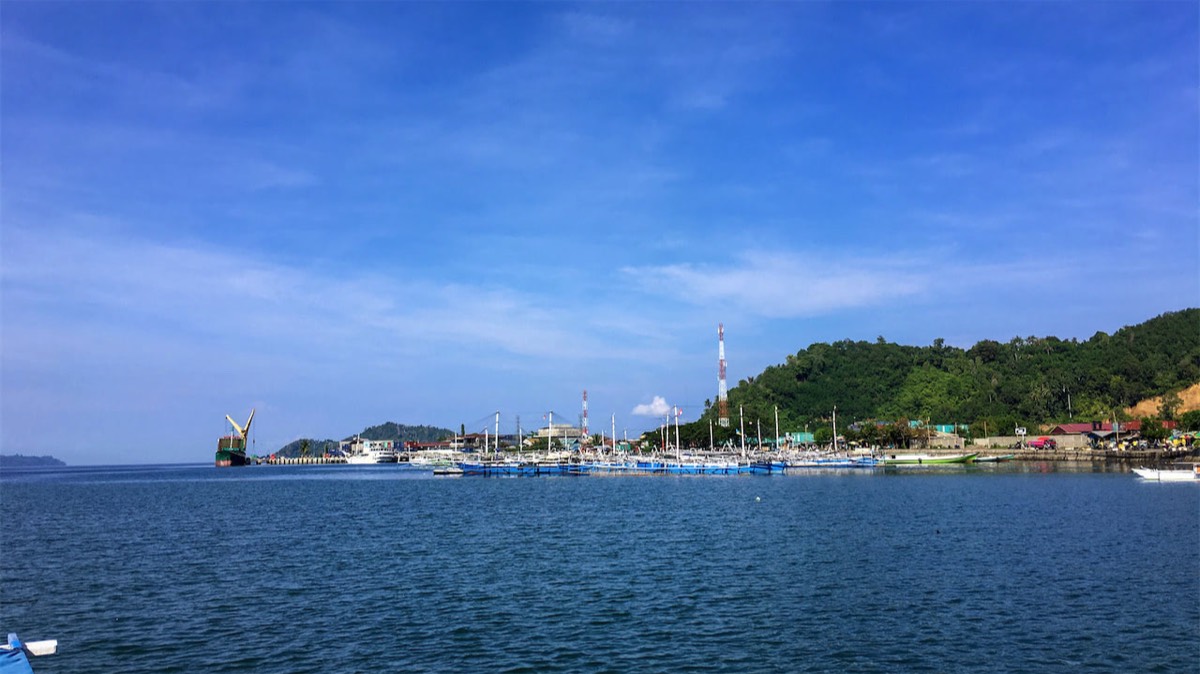
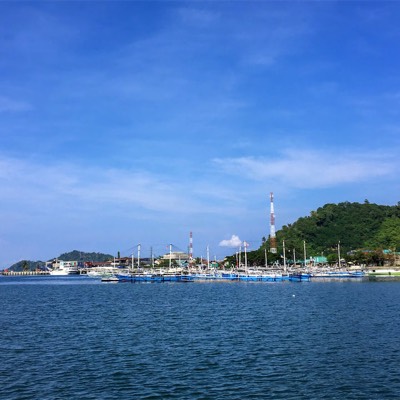
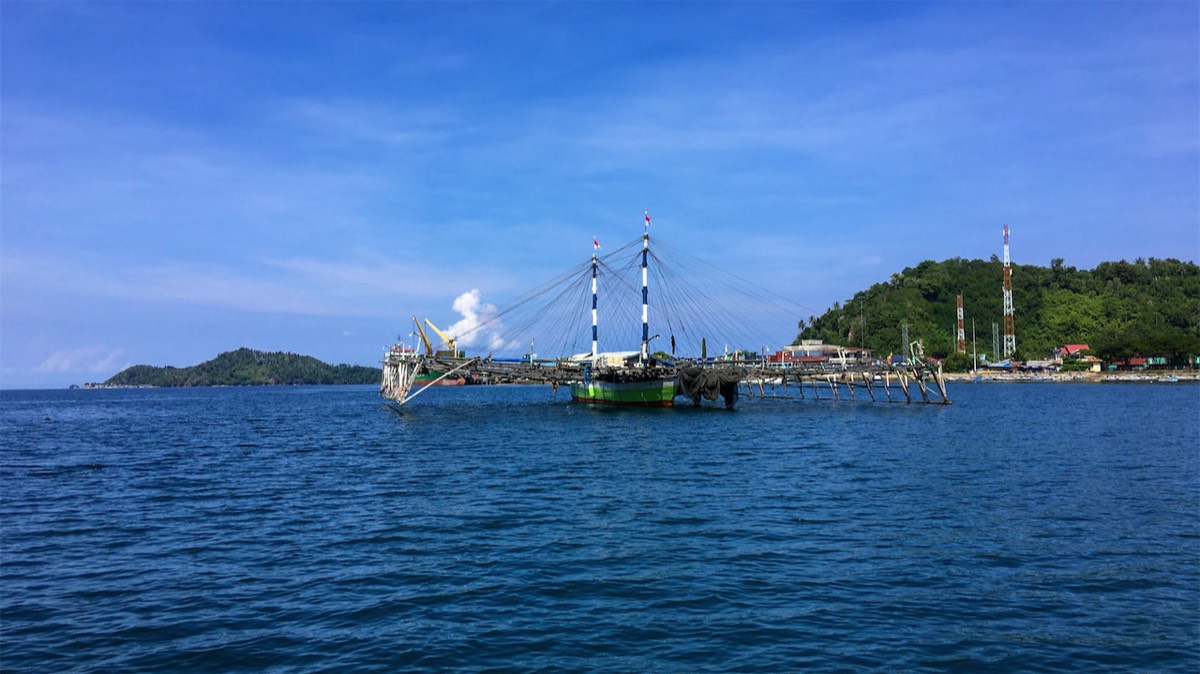
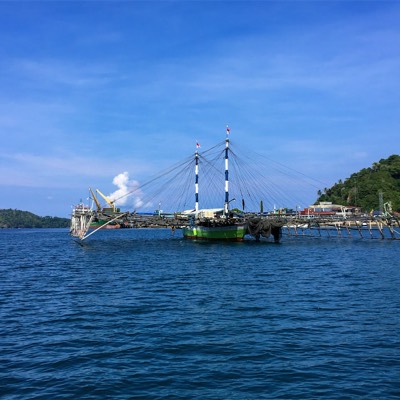
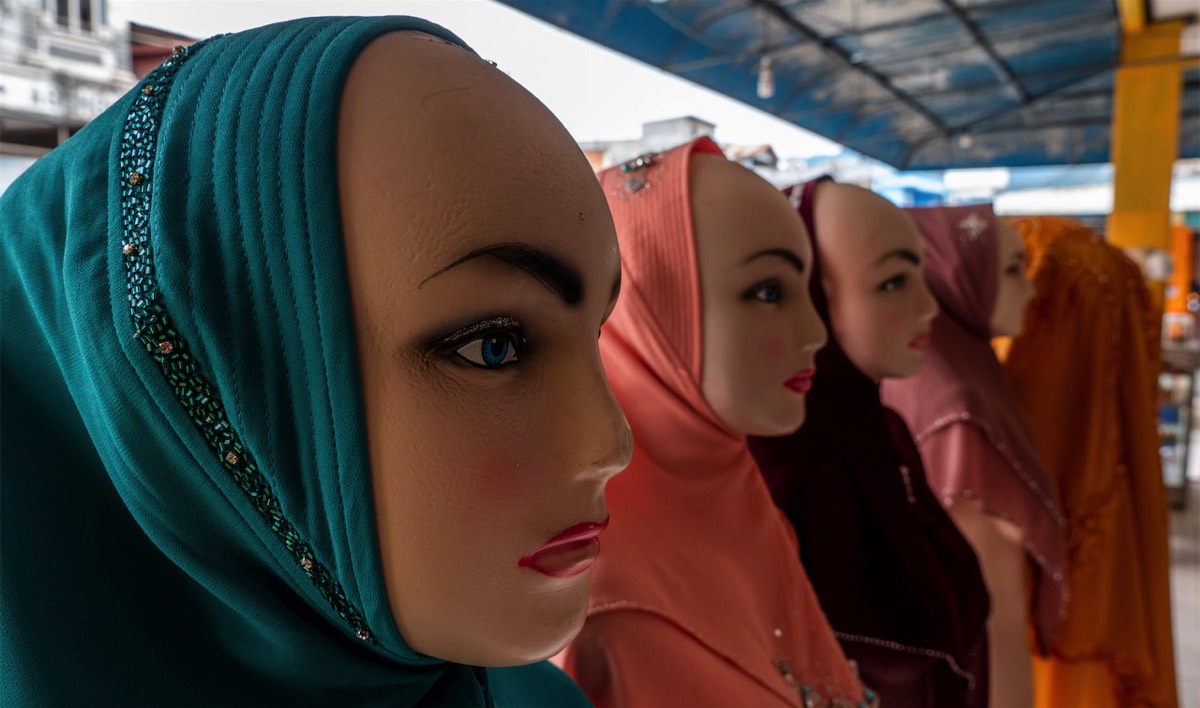
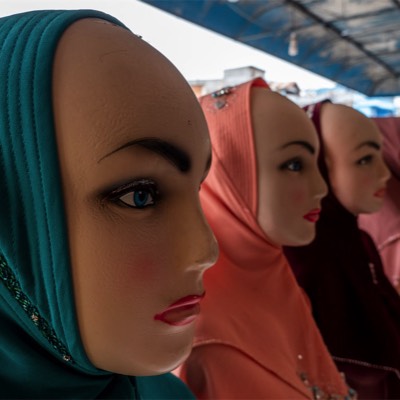
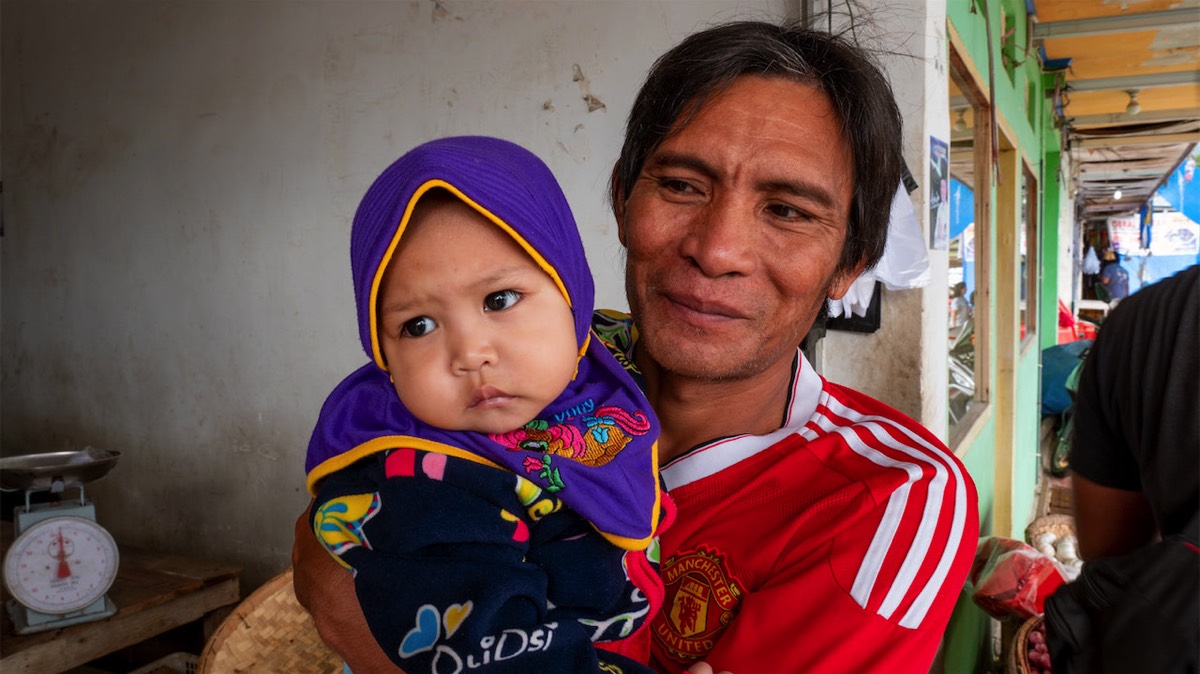





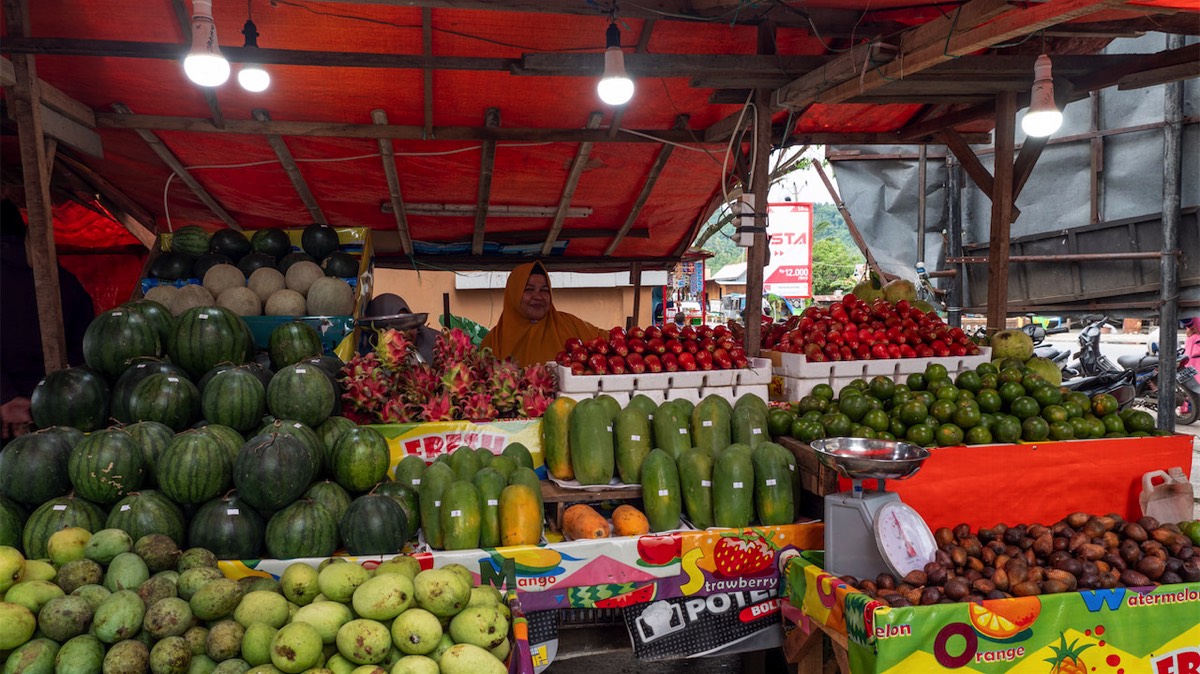
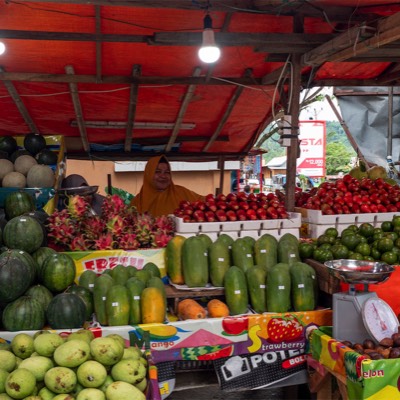
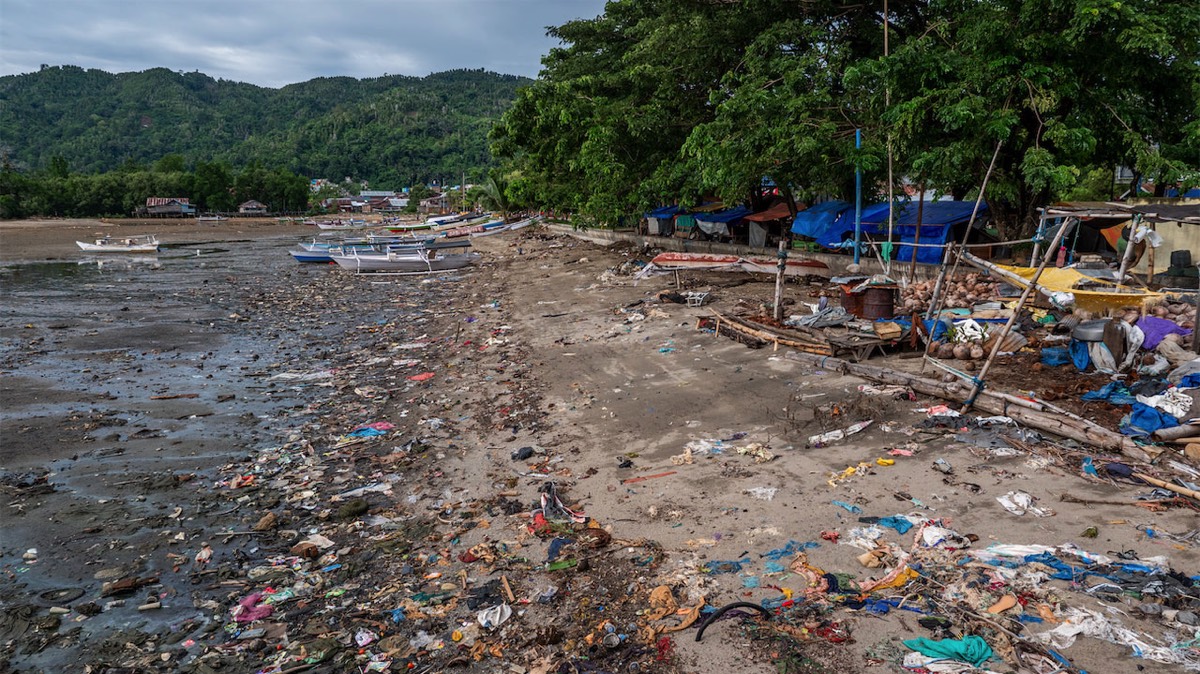
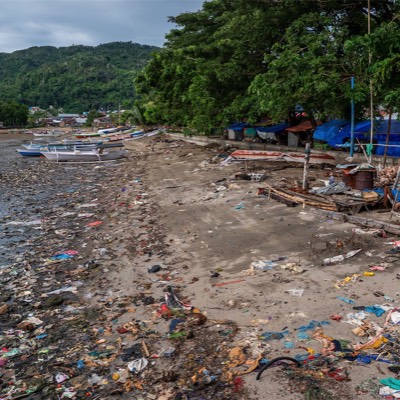

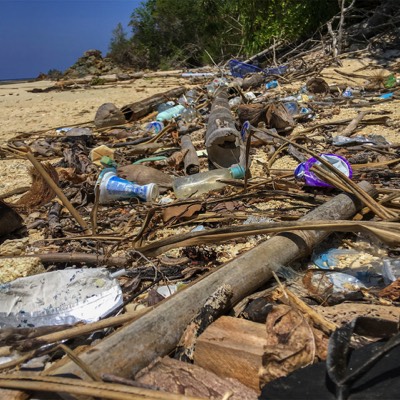

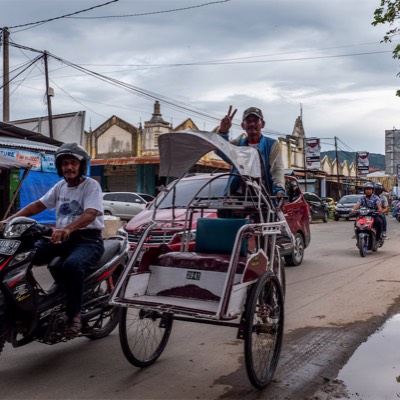
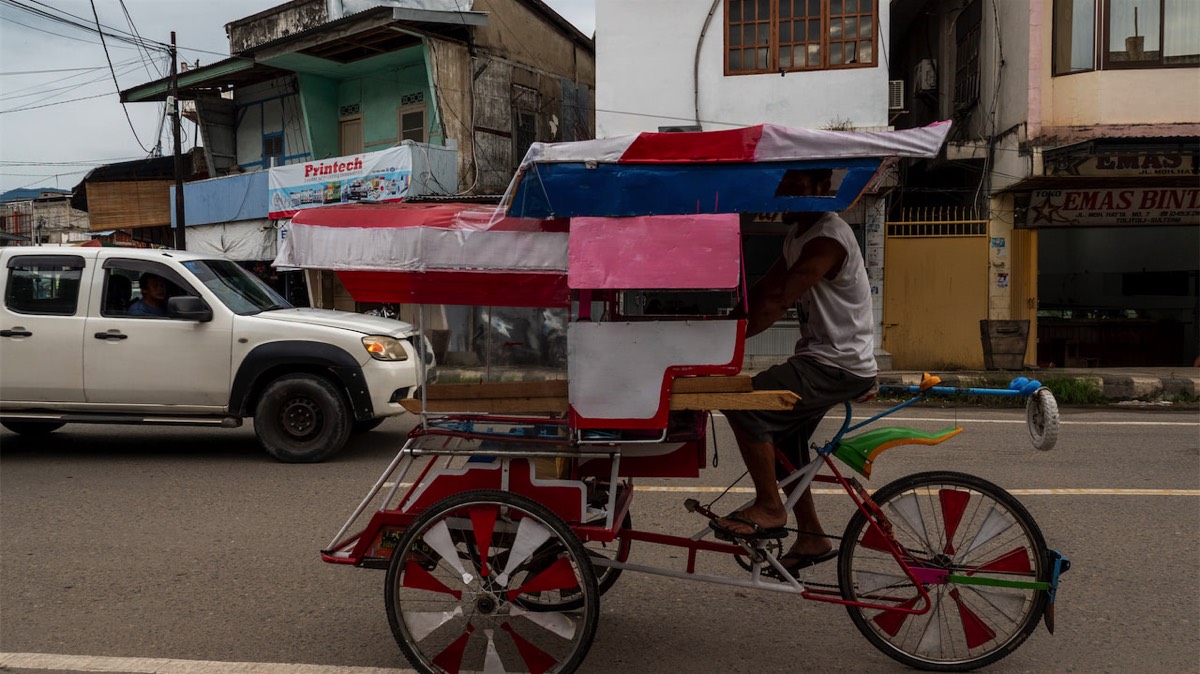
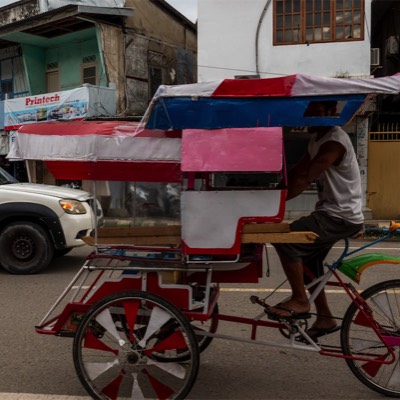
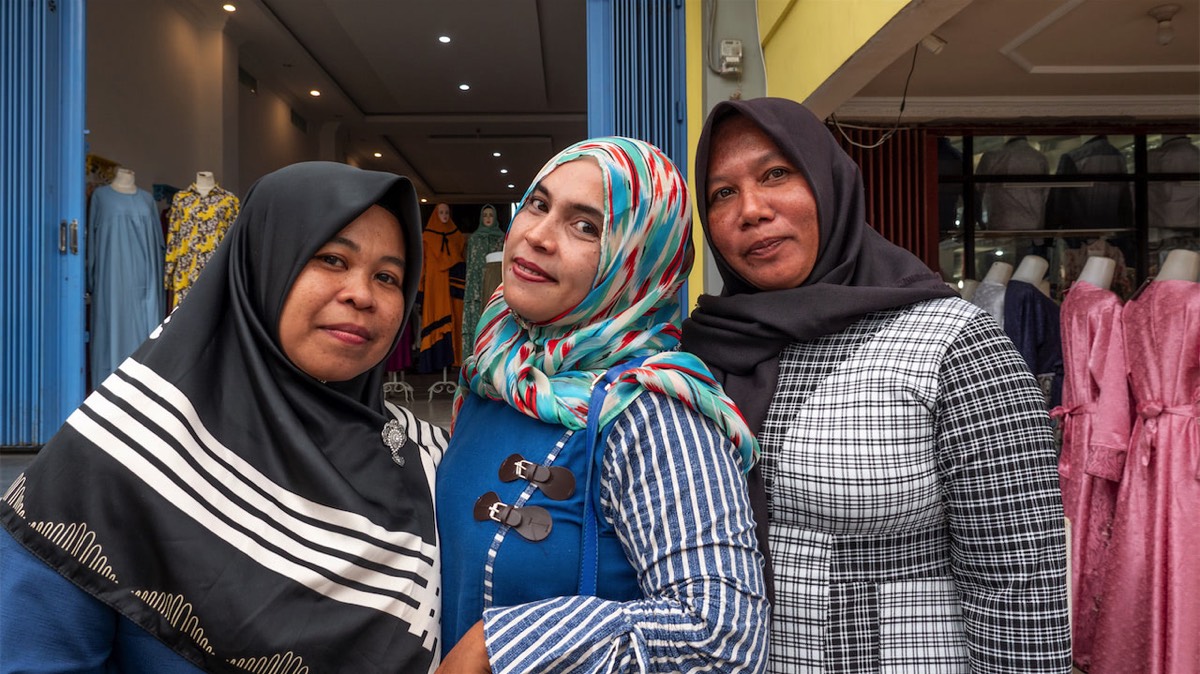
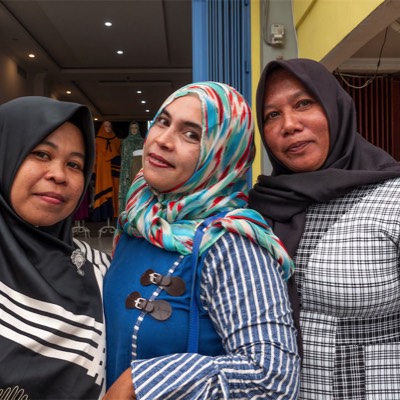
Bokidive Homestay
Unfortunately, there are no hotels or bungalows on the beach in Tolitoli, so you have to rely on the few, simple accommodations in town.
We had already booked our accommodation in the Bokidive Homestay in advance, which in retrospect turned out to be the best choice for Tolitoli. Unfortunately, there is nothing in Tolitoli that can be recommended as an alternative.
At Bokidive Homestay you sleep in small, simply furnished, air-conditioned rooms. Since you live in the catchment area of two mosques, you can't do without ear plugs at night. However, even the best hearing protection does not manage to suppress the noise of the two imams.
Meals are taken in the large family home. The food is good and filling and is freshly cooked every day by a domestic servant.
We had already booked our accommodation in the Bokidive Homestay in advance, which in retrospect turned out to be the best choice for Tolitoli. Unfortunately, there is nothing in Tolitoli that can be recommended as an alternative.
At Bokidive Homestay you sleep in small, simply furnished, air-conditioned rooms. Since you live in the catchment area of two mosques, you can't do without ear plugs at night. However, even the best hearing protection does not manage to suppress the noise of the two imams.
Meals are taken in the large family home. The food is good and filling and is freshly cooked every day by a domestic servant.
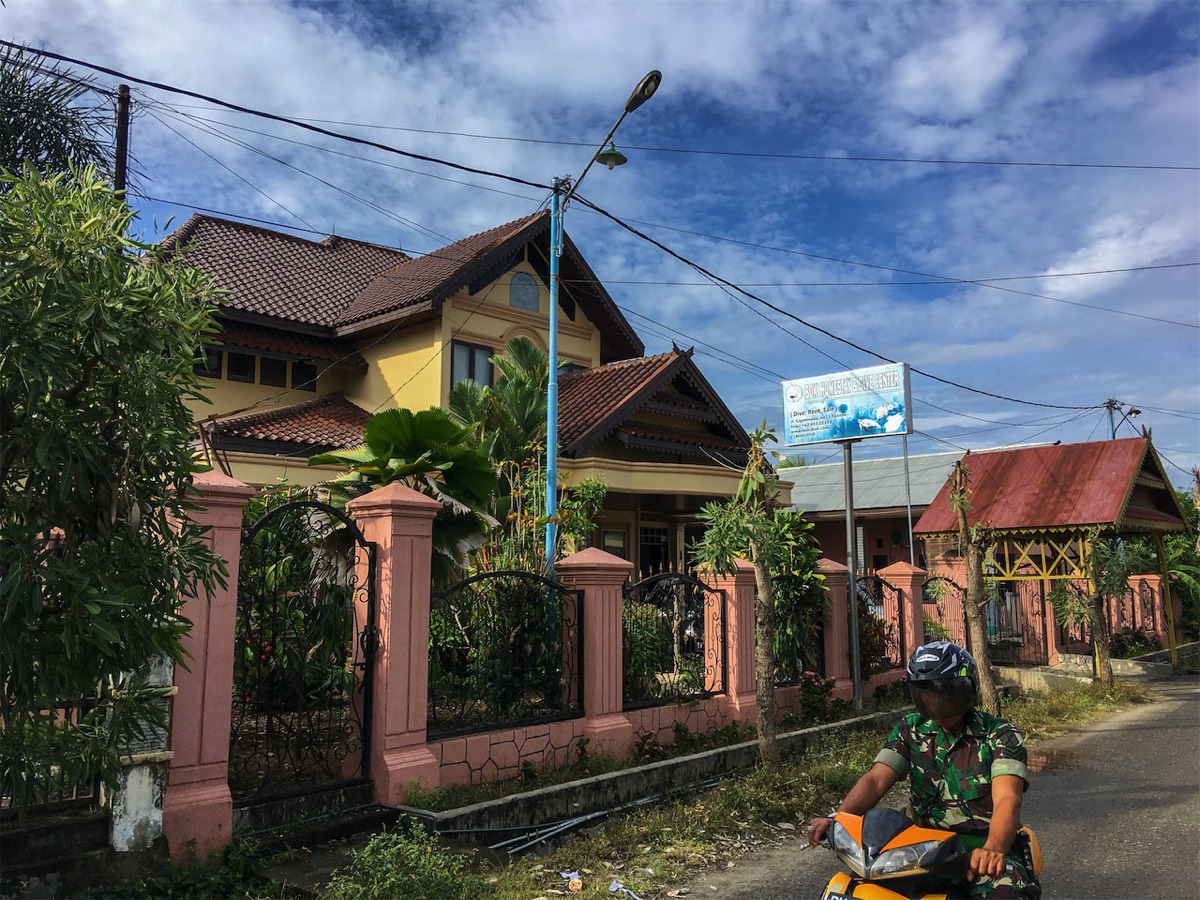
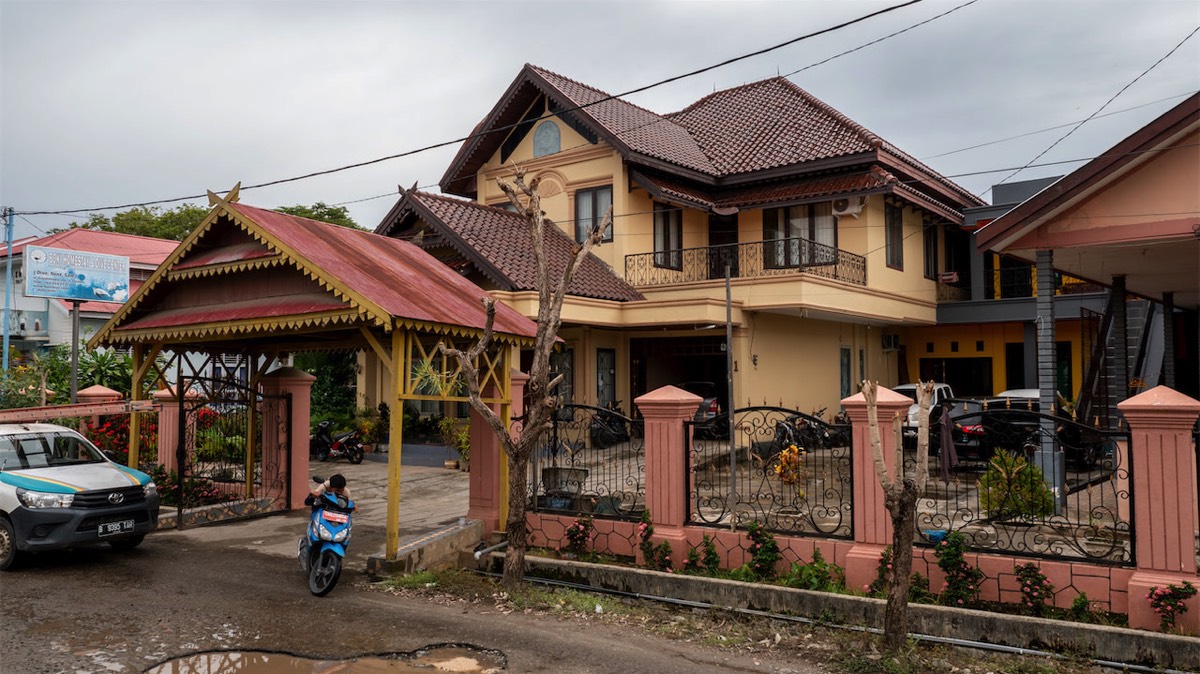
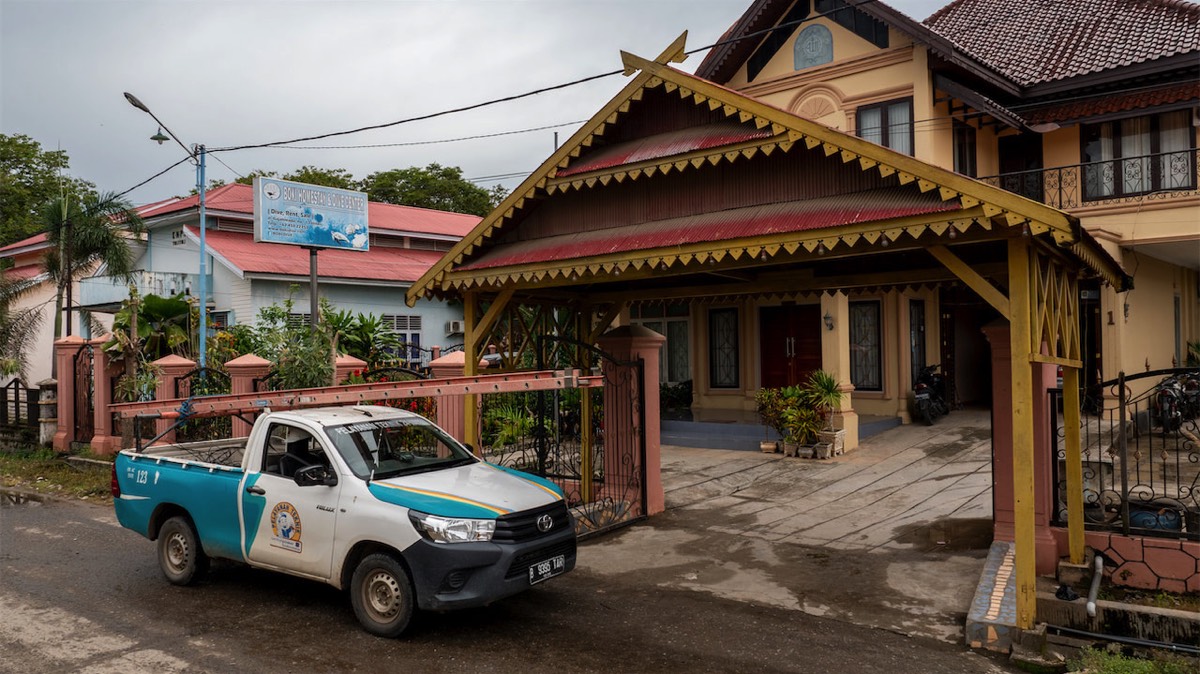
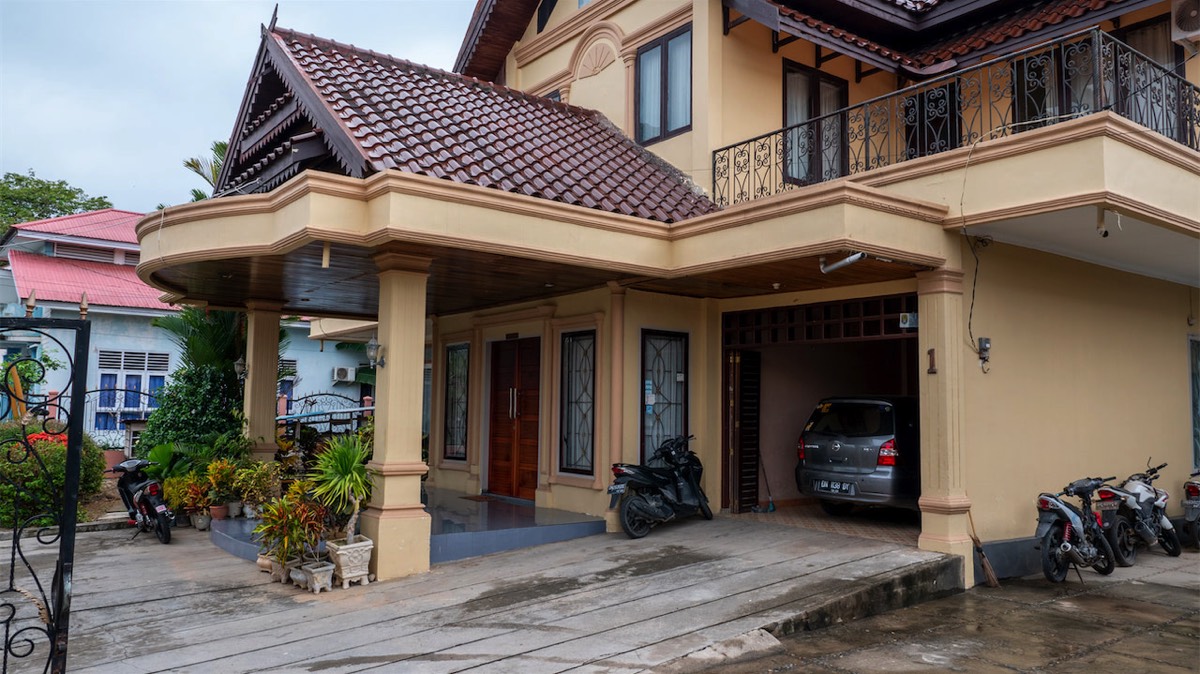
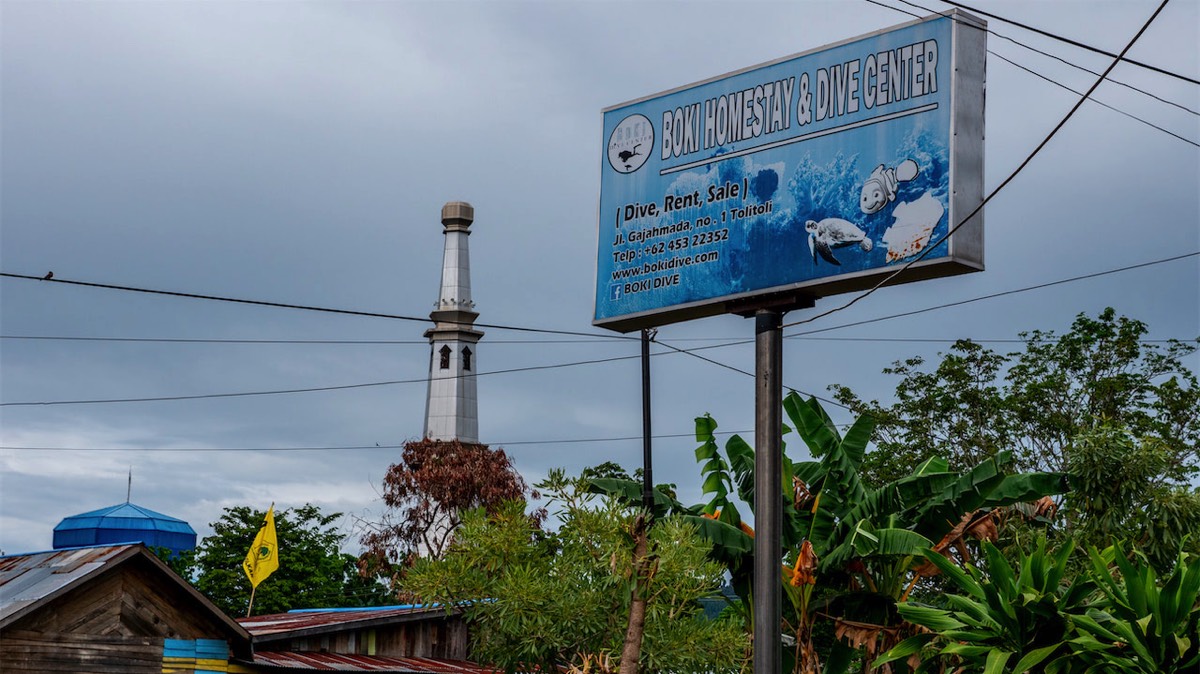

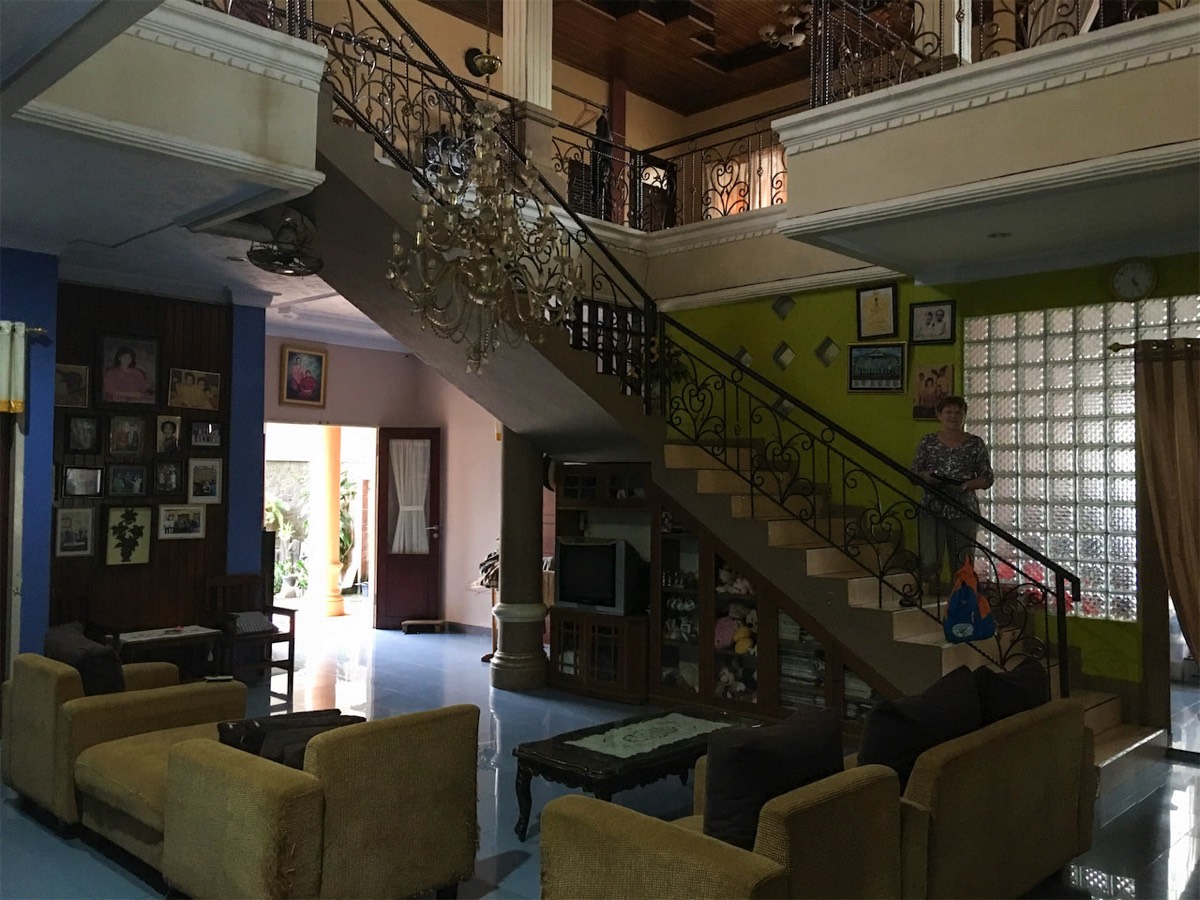
Diving in Tolitoli
As already described in the introduction, the location of Tolitoli at the northern entrance of the Strait of Makassar has great diving potential. After all, the sea between Tolitoli and Kalimantan is more than 2000 m deep and everything large which is on its way from the Pacific to the Indian Ocean has to pass through here.
Why should the underwater world here on the east coast of the Makassar Strait differ from the west coast?
Why should the underwater world here on the east coast of the Makassar Strait differ from the west coast?
Dugongs - Manatees
Another reason for my visit was the sightings of dugongs. These Indo-Pacific Manatees are spotted in the coastal area around Tolitoli. Lately there have even been efforts to protect these large marine mammals. To be able to see the shy animals, you need a lot of time and perseverance. We had to find out for ourselves, because we had no luck during our stay.
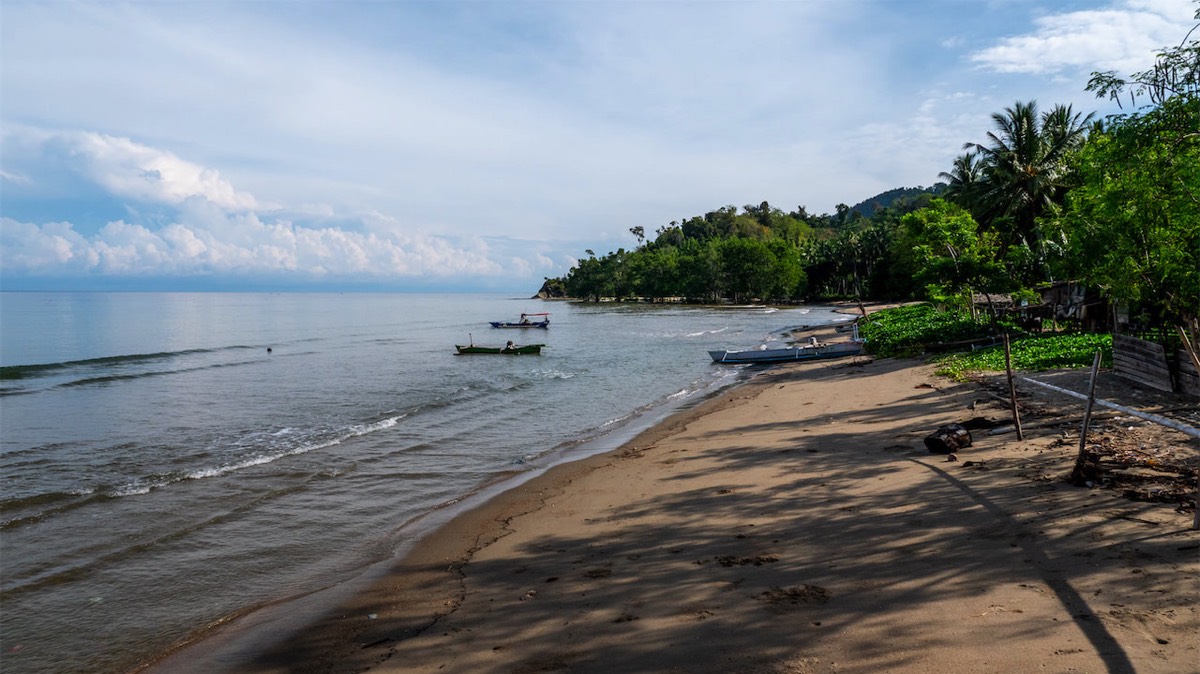
The kilometer-long beach of Lalos in the north of Tolitoli is a popular destination for the locals on weekends. Only a few meters from the beach there are extensive seagrass meadows that are 3 - 6 m deep, which dugongs like to visit.
In the absence of dugongs, we had to be content with the seagrass meadows and macro shots under a jetty. At least we found a large, black frogfish at the jetty and in the seagrass many seahorses, pipefish, ghost moray eels, anemone fish and nudibranchs.
Since we did this dive several times during our stay in Tolitoli - always hoping to finally see a manatee - it became a bit boring to dive there over time.
Island hopping near Tolitoli
In the bay in front of Tolitoli there are several islands that are suitable for diving trips. There have been regular sightings of dugongs in front of Pulau Simatang in the west. Further south is Pulau Lingayan. The inhabited island is surrounded by a fringing reef and offers diving spots with strong current on the west side. The journey from Tolitoli, however, takes a long time: It takes around 3 hours by car to get to the port in Ogotua, then it takes another hour with local boats to arrive at the dive sites.
Closer to this are the islands of Lutungan and Kabetan, which are located directly in front of Tolitoli, with smaller offshore islands (Pulau Tiga). We did quite a number of dives, especially before Kabetan. The reefs have suffered from dynamite fishing in the past but are on the way to regeneration. Overall, we saw little fish. A couple of eagle rays were the absolute highlight, every now and then little Napoleons appeared.
We did not see a single shark during our two-weeks stay in Tolitoli. Many dives were just boring, but this was partly due to the dive guides who didn't know their own dive sites well, were too inexperienced and had absolutely no idea how to plan and conduct a good dive.
Pulau Sabang Tende is north of Tolitoli. Small huts on the beach, a large house under construction to house a diving base planned by the tourism authority, suggest that Sabang is a popular weekend destination for locals.
The small island of Sabang is connected to the mainland by a jetty. During the week there is nothing going on here. Diving is done by gearing up on the large, covered jetty and then switching to narrow outrigger boats. In front of Sabang you will find beautiful hard corals and, as everywhere around Tolitoli, little fish. At least we saw a school of small barracudas and two small Napoleons at Traffic Jam dive site.
Further north are two other islands: Pulau Kapas and Pulau Salando. Here, too, a longer journey by car is necessary. Local fishing boats may then be used to reach the dive sites on the west side of the islands.
Closer to this are the islands of Lutungan and Kabetan, which are located directly in front of Tolitoli, with smaller offshore islands (Pulau Tiga). We did quite a number of dives, especially before Kabetan. The reefs have suffered from dynamite fishing in the past but are on the way to regeneration. Overall, we saw little fish. A couple of eagle rays were the absolute highlight, every now and then little Napoleons appeared.
We did not see a single shark during our two-weeks stay in Tolitoli. Many dives were just boring, but this was partly due to the dive guides who didn't know their own dive sites well, were too inexperienced and had absolutely no idea how to plan and conduct a good dive.
Pulau Sabang Tende is north of Tolitoli. Small huts on the beach, a large house under construction to house a diving base planned by the tourism authority, suggest that Sabang is a popular weekend destination for locals.
The small island of Sabang is connected to the mainland by a jetty. During the week there is nothing going on here. Diving is done by gearing up on the large, covered jetty and then switching to narrow outrigger boats. In front of Sabang you will find beautiful hard corals and, as everywhere around Tolitoli, little fish. At least we saw a school of small barracudas and two small Napoleons at Traffic Jam dive site.
Further north are two other islands: Pulau Kapas and Pulau Salando. Here, too, a longer journey by car is necessary. Local fishing boats may then be used to reach the dive sites on the west side of the islands.
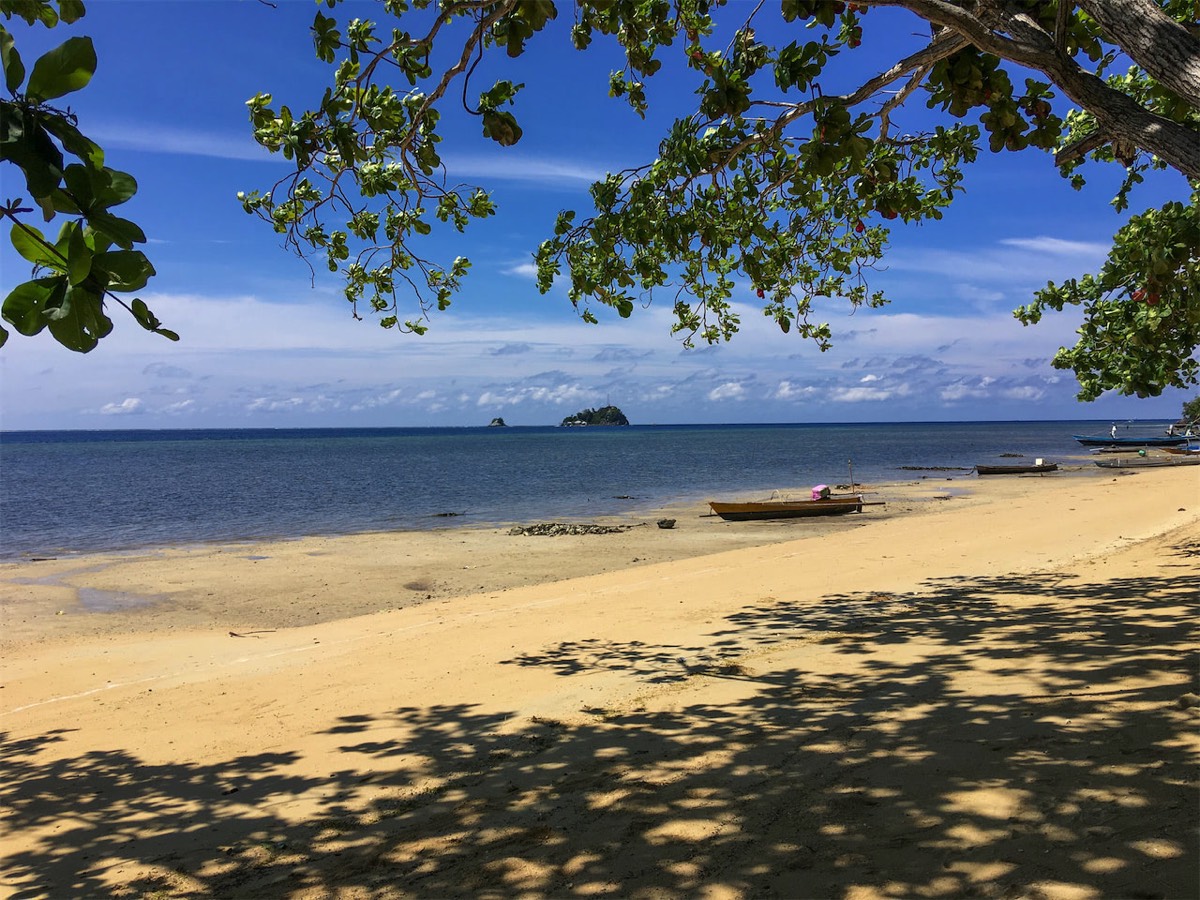
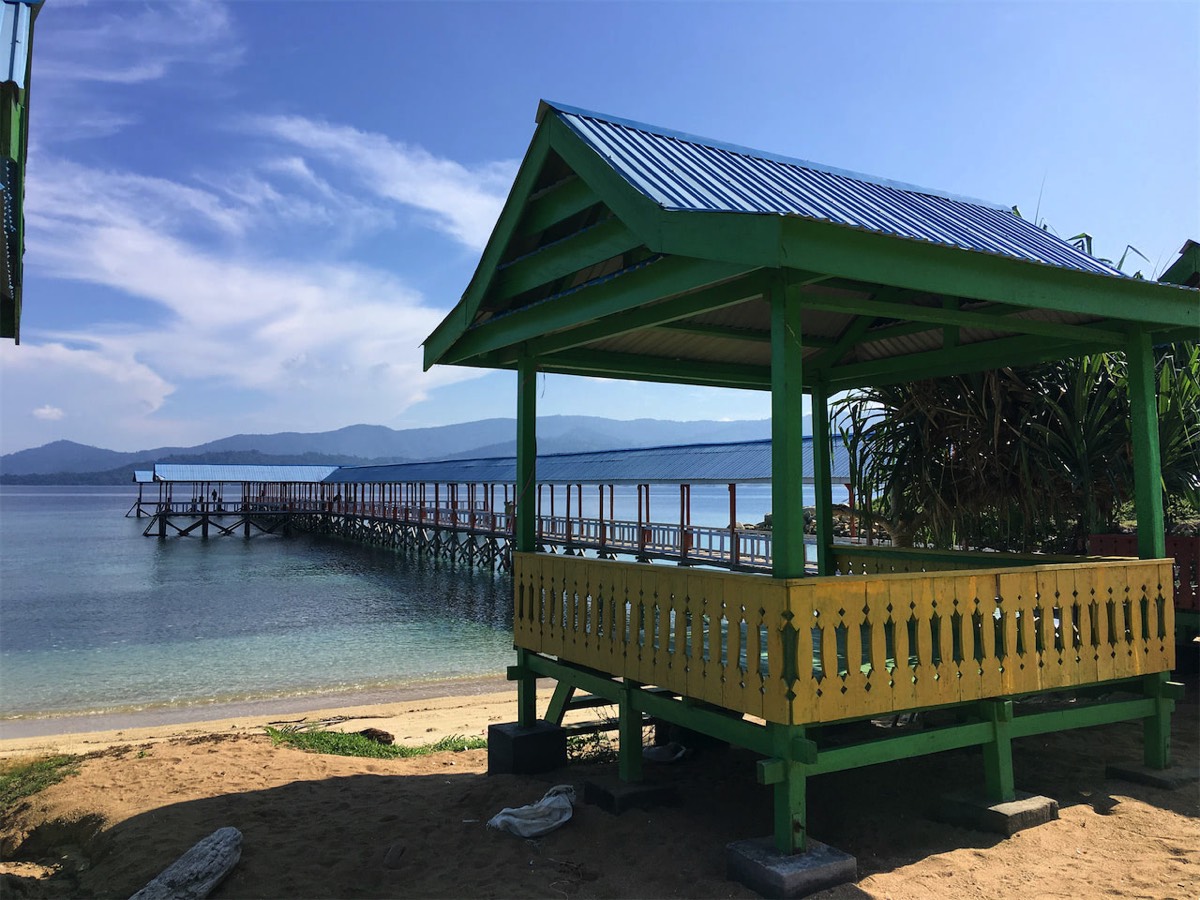
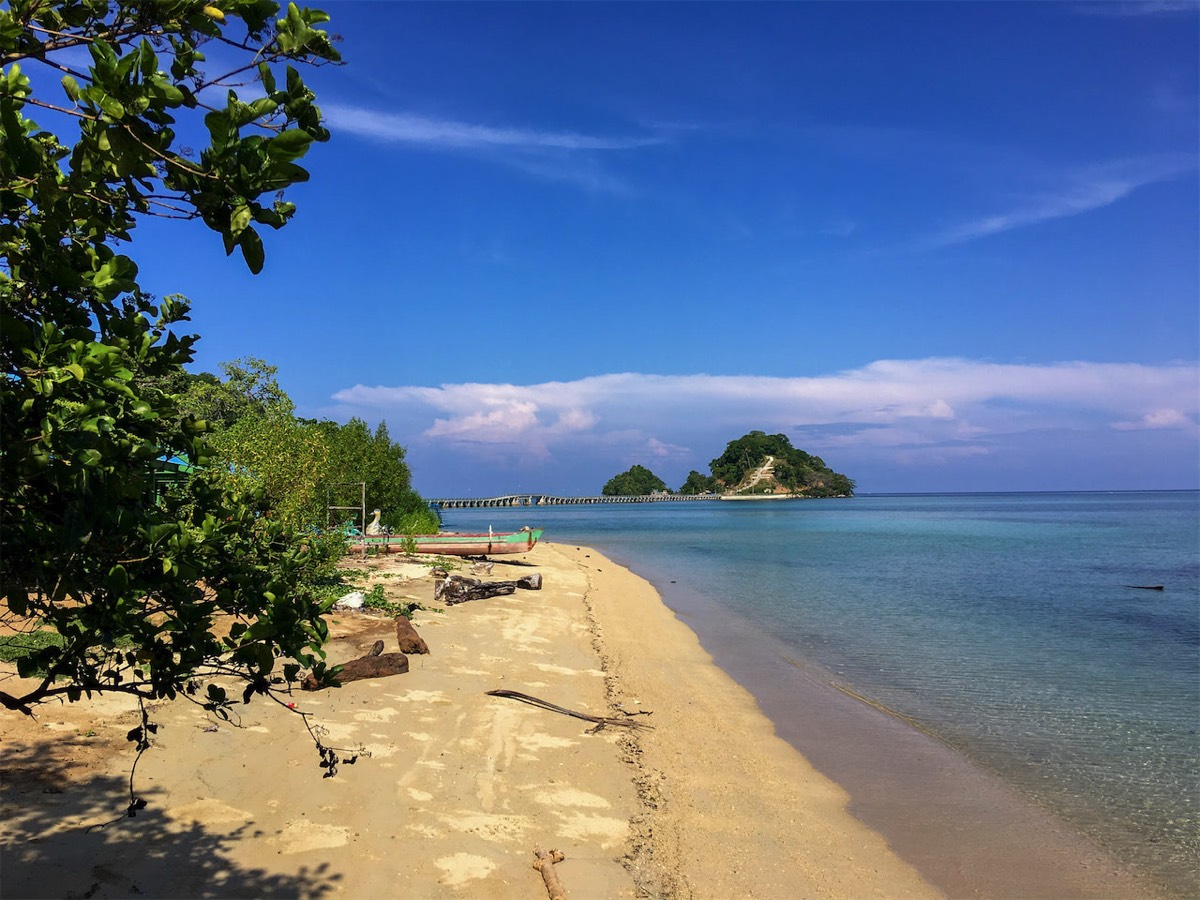
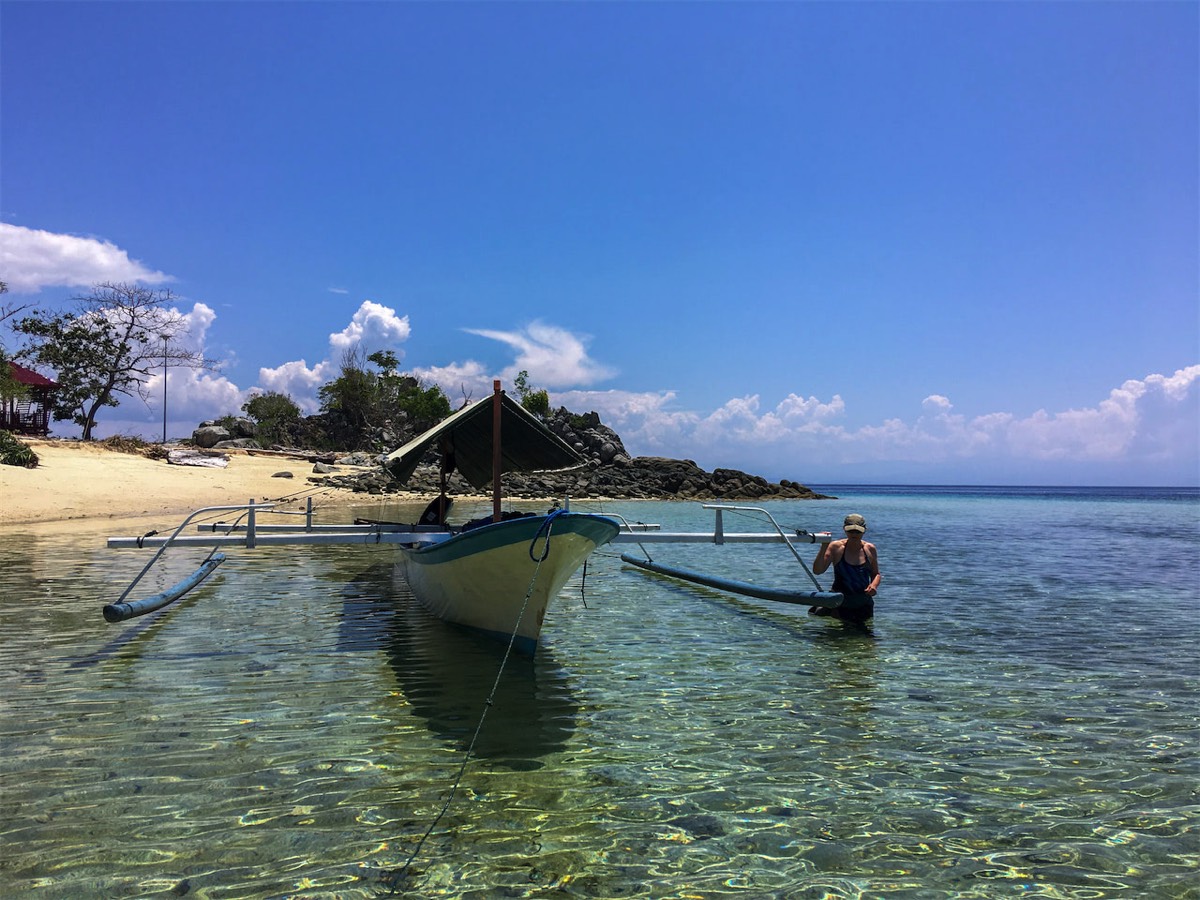
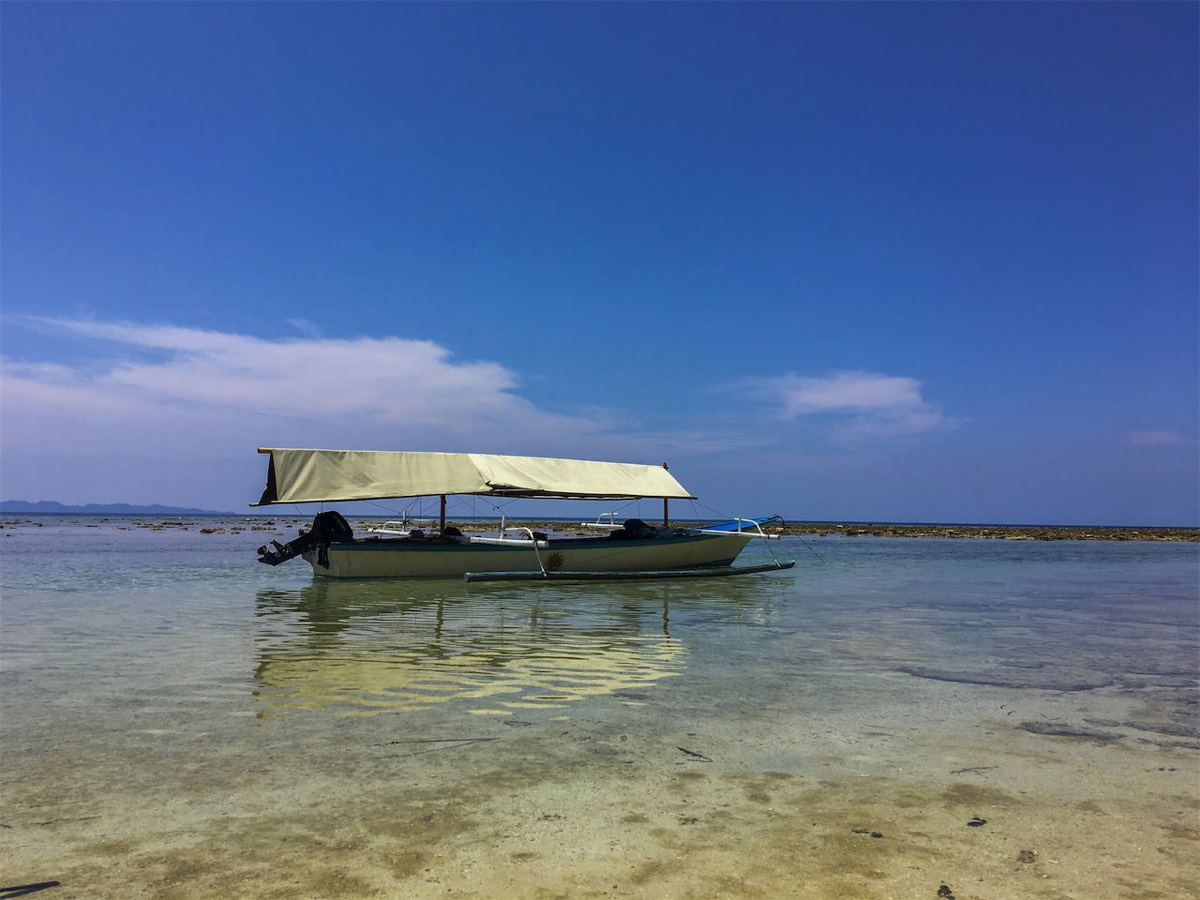

Bokidive - the dive center
To call Bokidive a dive center would be an exaggeration. Basically, it is the big family home of the manager of the diving center, Ariyati with a few small guest rooms, a training area on the upper floor and a common area on the ground floor shared by family and guests.
The house is located in the middle of the city in a quiet area, apart from the inevitable noise of the two mosques in the neighborhood. As a guest you only have the option of staying in the family's living room or in your own small room. There is no outside seating and no beautiful view.
The tanks are filled on a small terrace in front of the house. That can get really loud.
Every morning all diving equipment is loaded onto pickups. Guests and equipment are then either driven directly to the dive sites or to the port.
The Bokidive dive boat turned out to be an absolute disaster. There was nowhere a place to stand upright on the shaded foredeck. The holey tarpaulin for shading was attached so low that one could only move about when stooped. Oxygen and material for first aid were of course not on board either. Since the boat could only be maneuvered in forward gear, approaching the dive sites and then later, after completing the dive and re-entering on a primitive wooden ladder was a cumbersome activity. Fortunately, we always had calm seas during our trips.
Dive sites further away are also reached with the pickups. Then divers have to step on fishermen's wobbly outrigger boats. We almost capsized one of these small boats after a dive. Of course there are no boarding aids on these small boats and neither the boatmen nor the dive guides are of great help.
The house is located in the middle of the city in a quiet area, apart from the inevitable noise of the two mosques in the neighborhood. As a guest you only have the option of staying in the family's living room or in your own small room. There is no outside seating and no beautiful view.
The tanks are filled on a small terrace in front of the house. That can get really loud.
Every morning all diving equipment is loaded onto pickups. Guests and equipment are then either driven directly to the dive sites or to the port.
The Bokidive dive boat turned out to be an absolute disaster. There was nowhere a place to stand upright on the shaded foredeck. The holey tarpaulin for shading was attached so low that one could only move about when stooped. Oxygen and material for first aid were of course not on board either. Since the boat could only be maneuvered in forward gear, approaching the dive sites and then later, after completing the dive and re-entering on a primitive wooden ladder was a cumbersome activity. Fortunately, we always had calm seas during our trips.
Dive sites further away are also reached with the pickups. Then divers have to step on fishermen's wobbly outrigger boats. We almost capsized one of these small boats after a dive. Of course there are no boarding aids on these small boats and neither the boatmen nor the dive guides are of great help.


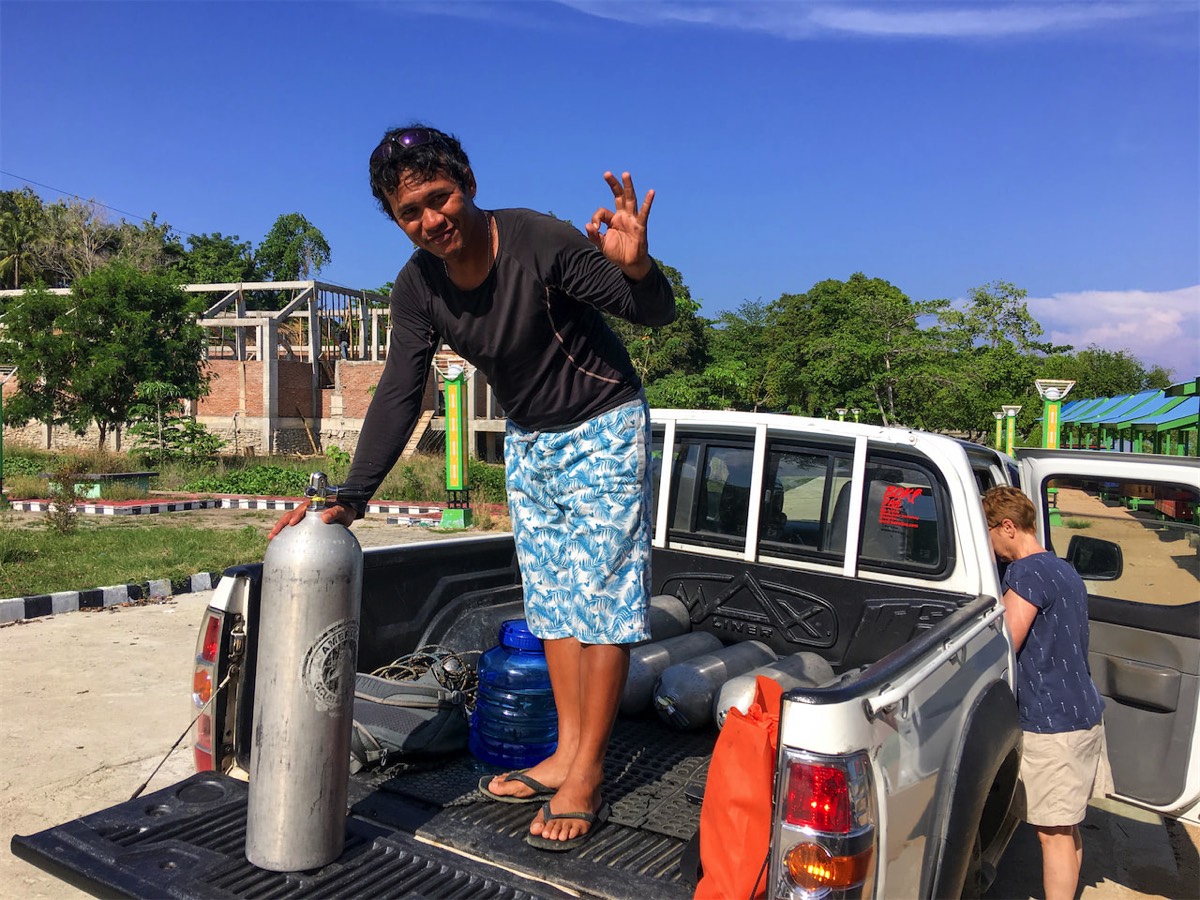

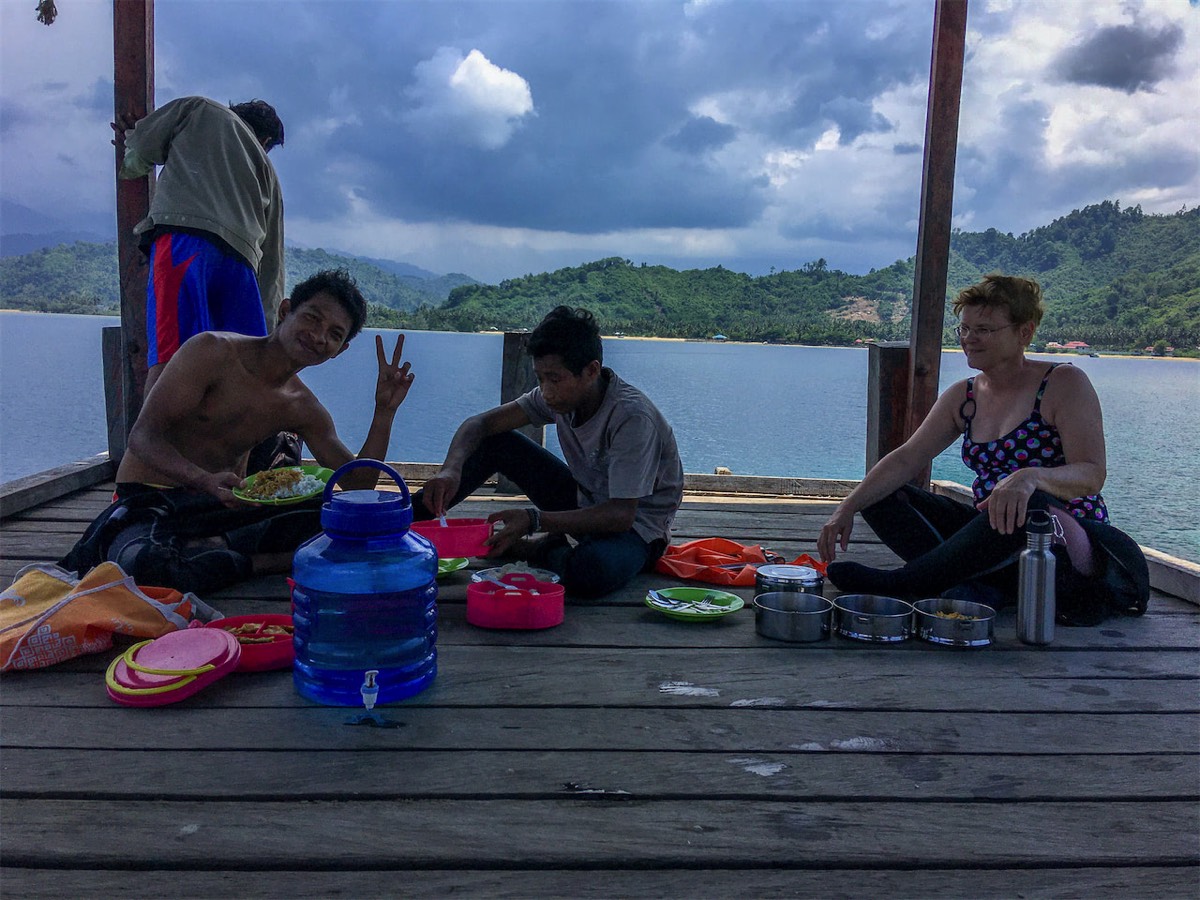

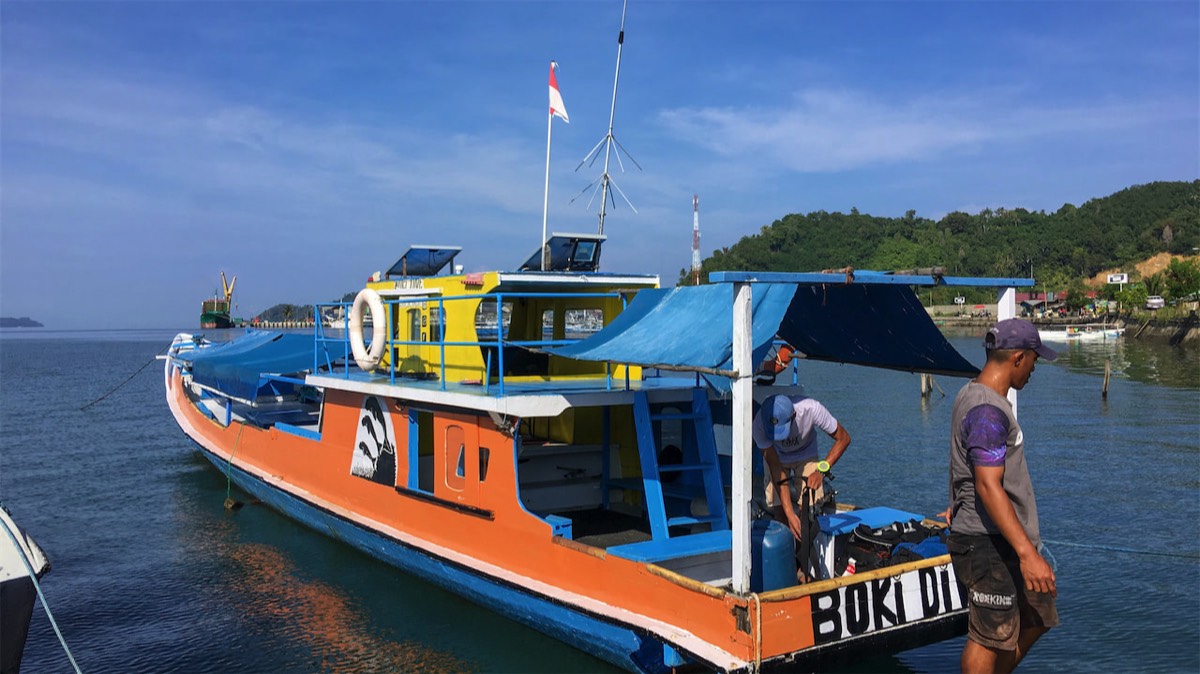


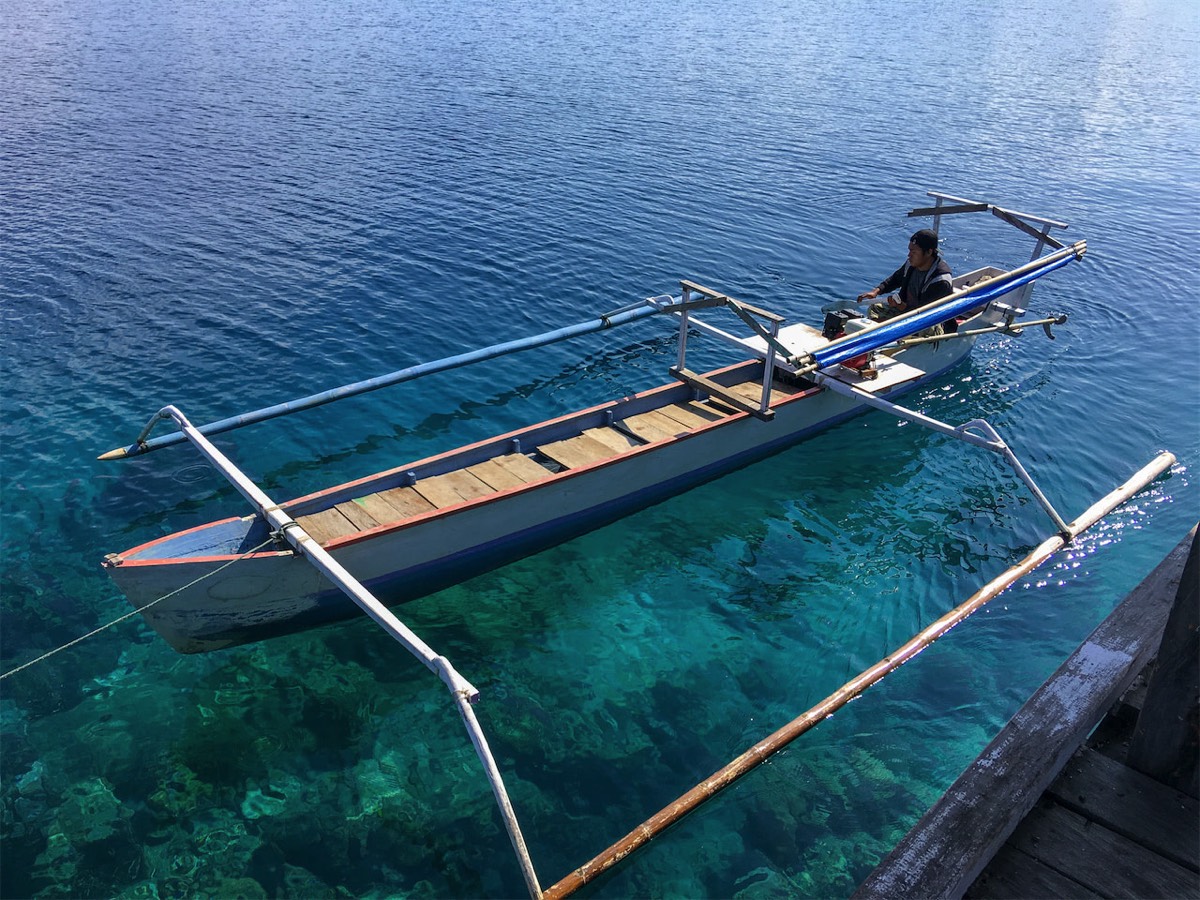
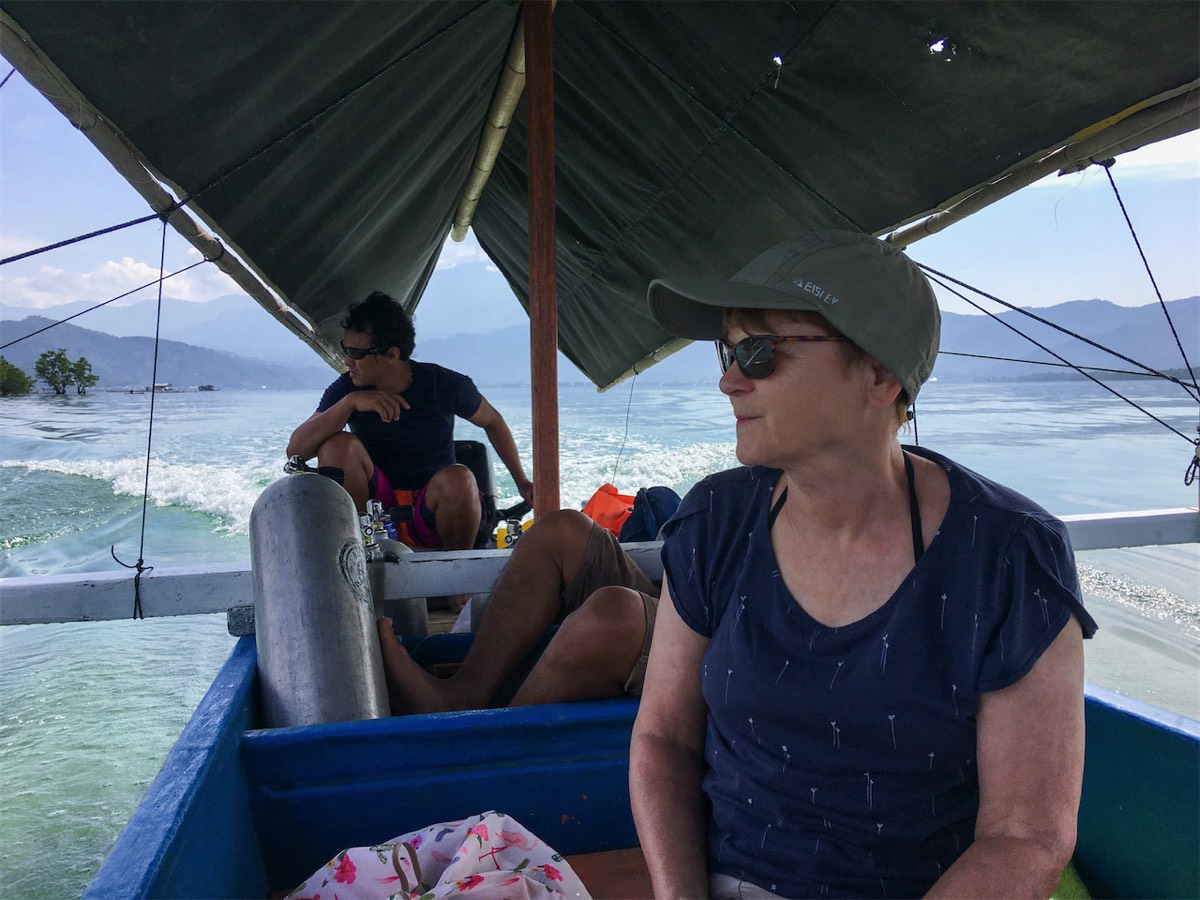
The dive guides themselves are completely inexperienced and do their own thing underwater. One dive guide was only there to take photographs of the guests and then post pictures on Facebook. Fortunately, he did not accompany us often because he usually forgot something (sometimes the fins, then the mask, ...). The other guide swam ahead without showing anything or caring about the guests. Of course there was no briefing before the dives. We were given the approximate direction and off we went.
The boss, Ariyati, didn't go with us on a single dive. She said goodbye after three days to start her new job in Kalimantan. She seems to be convinced that you can manage a dive center on the side. A little advertising on Facebook and it works! Unfortunately it doesn't. We stayed back in Tolitoli with our two inexperienced dive guides. One had only made a few dives in Tolitoli, the other his training up to the AOWD in Jakarta.
Neither of the two had the slightest idea of the tasks a dive guide should perform. The service was extremely poor.
I can therefore only advise against diving with Bokidive. For the much too high price, you don't get any equivalent value. With a stay of 8 days we paid € 1100 for 18 dives, including food, transfer from Palu and to Gorontalo and a day trip to Pinjang to observe Maleos, so-called Megapodes, which bury their eggs in the warm sand of the beach.
The boss, Ariyati, didn't go with us on a single dive. She said goodbye after three days to start her new job in Kalimantan. She seems to be convinced that you can manage a dive center on the side. A little advertising on Facebook and it works! Unfortunately it doesn't. We stayed back in Tolitoli with our two inexperienced dive guides. One had only made a few dives in Tolitoli, the other his training up to the AOWD in Jakarta.
Neither of the two had the slightest idea of the tasks a dive guide should perform. The service was extremely poor.
I can therefore only advise against diving with Bokidive. For the much too high price, you don't get any equivalent value. With a stay of 8 days we paid € 1100 for 18 dives, including food, transfer from Palu and to Gorontalo and a day trip to Pinjang to observe Maleos, so-called Megapodes, which bury their eggs in the warm sand of the beach.
